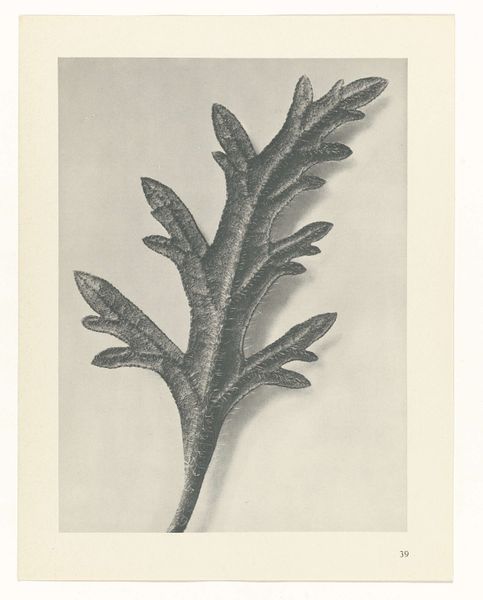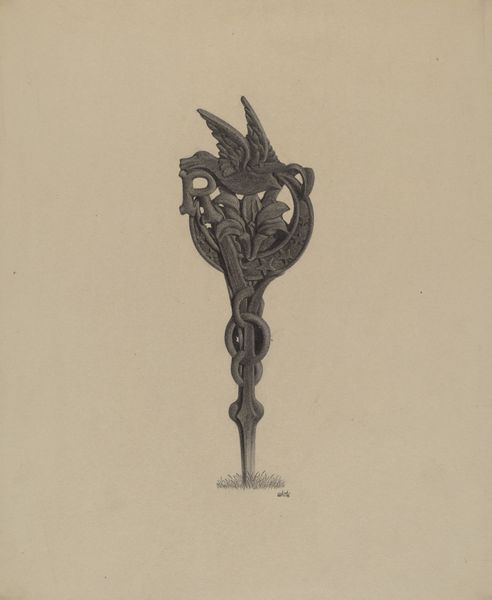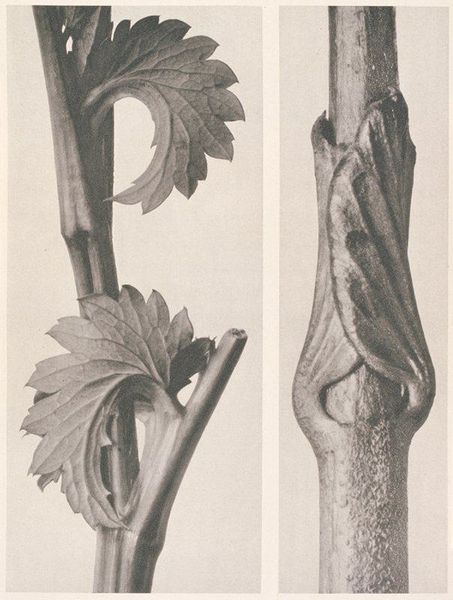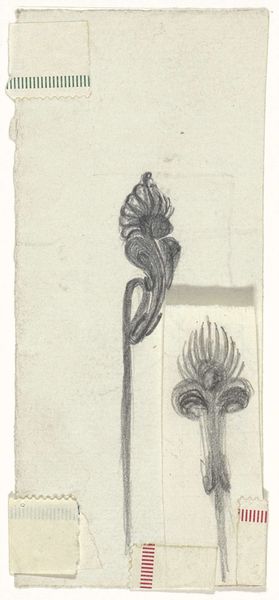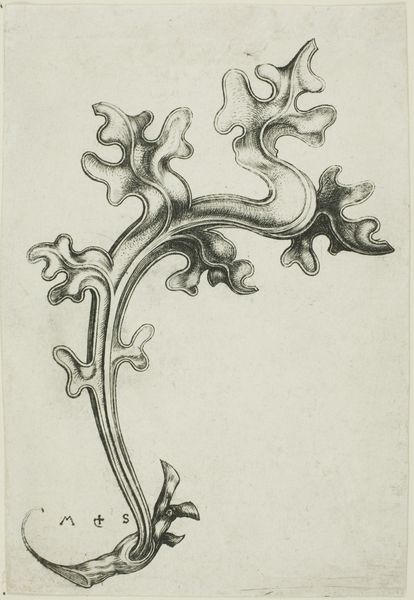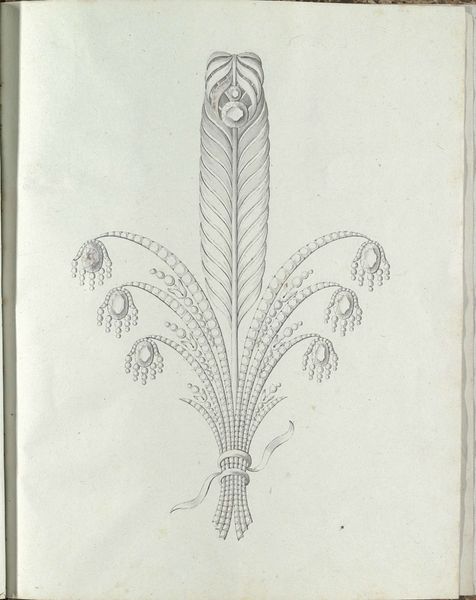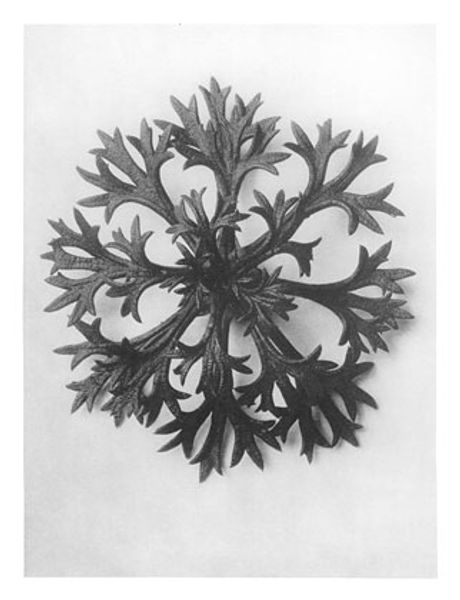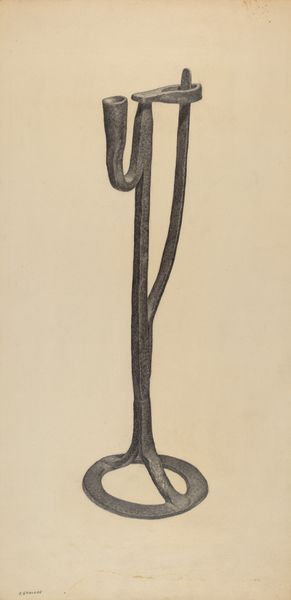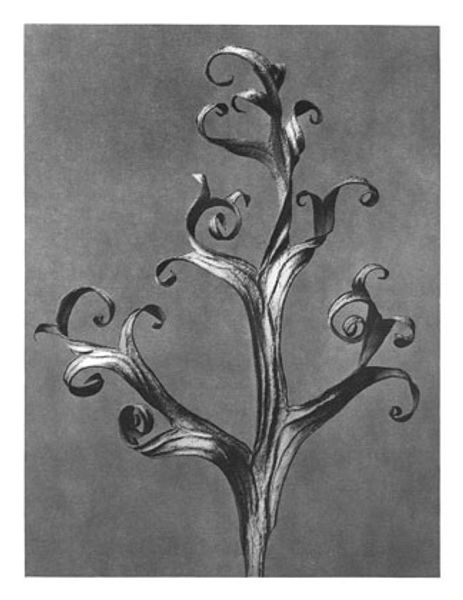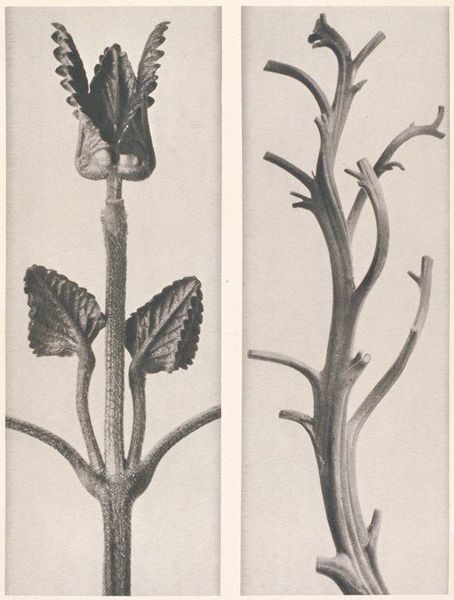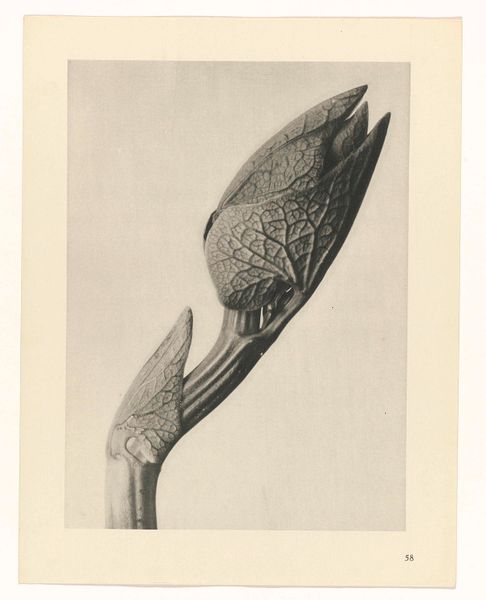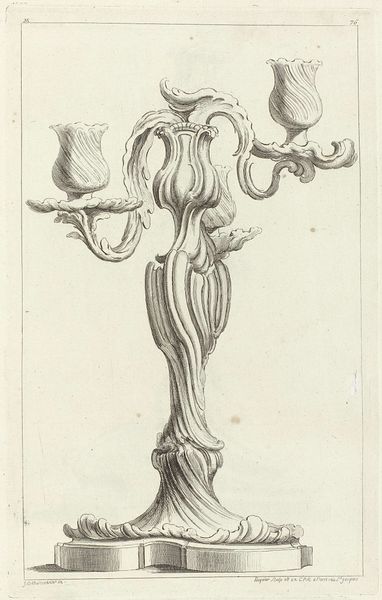
Saxifraga Willkommiana (Willkomm's Sacifrage) before 1928
0:00
0:00
Dimensions: 10 1/4 x 7 11/16 in. (26.04 x 19.53 cm) (image)12 5/16 x 9 3/8 in. (31.27 x 23.81 cm) (sheet)18 7/8 × 14 7/8 × 1 3/4 in. (47.94 × 37.78 × 4.45 cm) (outer frame)
Copyright: No Copyright - United States
Editor: Here we have Karl Blossfeldt's "Saxifraga Willkommiana", a photogravure printed before 1928. The tight framing and stark presentation of the plant creates this incredible sense of monumentality; it almost feels architectural. What can you tell me about it? Curator: Blossfeldt’s work exists in a fascinating space. He elevates botanical photography to an almost scientific level, documenting plant forms with incredible precision. Considering the rise of industrial design in the early 20th century, one could argue that his images highlight nature's own design principles. Do you think this contributes to a particular way of seeing nature at the time? Editor: That's a really interesting point! Maybe it provided a bridge between the natural world and this new machine age? Seeing these inherent geometric forms makes it more accessible and, perhaps, less threatening. Do you think the Art Nouveau influences might also have an impact? Curator: Absolutely. Art Nouveau embraced natural forms, but Blossfeldt strips away the decorative flourish, revealing a more fundamental, structural beauty. The image gains strength. And that act of framing - extracting a detail, removes it from immediate politics allowing different audiences, or viewers with divergent social values, to approach it. Does it invite us to see the political neutrality within photography, or expose how such notions conceal real cultural powers at play? Editor: Wow, I hadn't considered the socio-political implications of this botanical study. I guess it reflects both an appreciation of nature and an attempt to understand and control it in some way. Curator: Precisely. And this tension, between observation and manipulation, is central to understanding the public role of art, and particularly the politics inherent within images. Editor: This makes me think about how photography has shaped our understanding of the natural world, especially at a time of rapid industrial change. It's given me a lot to consider.
Comments
No comments
Be the first to comment and join the conversation on the ultimate creative platform.

